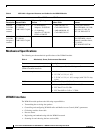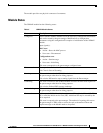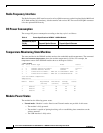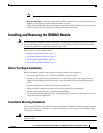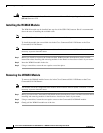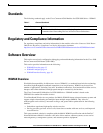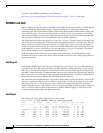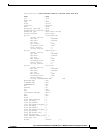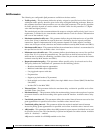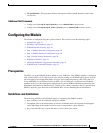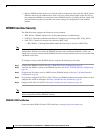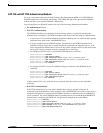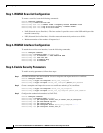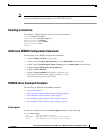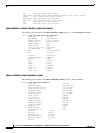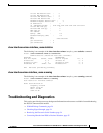
16
Cisco Connected Grid Modules for CGR 1000 Series—WiMAX Installation and Configuration Guide
OL-26236-03
Software Overview
QoS Parameters
The following are configurable QoS parameters available on the base station:
• Traffic priority—This parameter defines the priority assigned to specified service flow. Services
with higher traffic priority should be given lower delay and higher buffering preference. However
this parameter should not take precedence over any other QoS parameters. The specific algorithm
for traffic priorities depends on vendor solution. Available values for this parameter: 0-7 (higher
value indicates higher priority).
The standard only provides recommendation with respect to using the traffic priority, but it is not a
requirement. T standard is also clear that the scheduler behavior is left for vendors’ differentiation
and is out of the standards’ scope.
• Maximum sustained traffic rate—This parameter defines the peak information rate of specified
service flow. If rate is undefined or equal 0, then rate is limited by physical capacity and other
connections. Specific implementation of this parameter depends on vendor solution. Available
values: rate in bits per second (value does not include overhead caused by MAC headers and CRCs).
• Maximum traffic burst—This parameter defines the maximum burst size that is accommodated for
the specified service flow. Available values: size in bytes.
• Minimum reserved traffic rate—This parameter defines the minimum rate reserved for specified
service flow. It is in a sense the guaranteed rate. The specified rate shall be honored only when
sufficient data is available for scheduling. Available values: bits per second (value does not include
overhead caused by MAC headers and CRCs).
• Request/transmission policy—This parameter defines specific policy for selected service flow.
This policy defines the “shall/shall not” parameters for the following policies:
–
Broadcast bandwidth request opportunities
–
Multicast bandwidth request opportunities
–
Use piggyback requests with data
–
Fragment data
–
Suppress payload headers (CS parameter)
–
Pack multiple service data units (SDUs) into single Media Access Control (MAC) Packet Data
Unit (PDU)
–
Include CRC in the MAC PDU.
• Tolerated jitter—This parameter defines the maximum delay variation for specified service flow.
Available values: jitter in ms.
• Maximum latency—This parameter defines the maximum delay between the reception of a packet
on network interface and the forwarding of the packet to the RF interface. Available values: delay
in ms.
• Unsolicited grant interval—This parameter defines the nominal interval between successive data
grant opportunities for specified service flow. Available values: interval in ms.
• Unsolicited polling interval—This parameter defines the maximal nominal interval between
successive polling grants opportunities for specified service flow. Available values: interval in ms.
• ARQ enable—This parameter defines that ARQ (automatic repeat request) shall/shall not be used
for specified service flow. This functionality is optional and depends on vendor solution. Available
values: 0 – disabled, 1 – enabled.
ARQ must be enabled for all HARQ enabled service flow.



